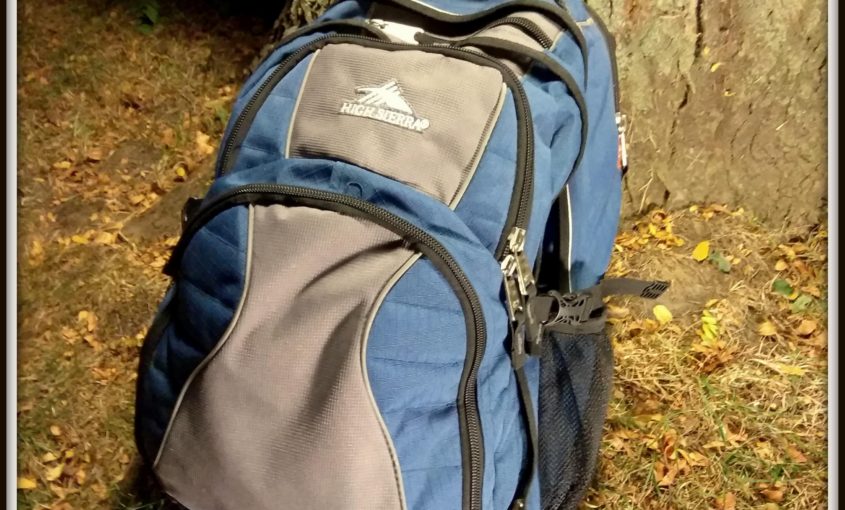Pesky Pests of Northern Michigan
We may earn money or products from the companies mentioned in this post.
In preparation for my youngest daughter’s first camping trip, I began thinking about what types of pesky critters we may encounter up in Michigan’s Upper Peninsula during the hottest part of the summer. As I began to think about it, a few came to mind that I would like to discuss and prepare for to make sure that we all have an enjoyable time, and not having the joy of dealing with nasty bites, burns, scratchies, etc. We are also bringing along our seven-year-old daughter, who is already seasoned in the art of tent camping. This was actually her idea and biggest concern when I shared the news of Allie’s first camping trip. Abby is an amazing big sister and is always looking out for and protecting her little sis.
I understand that this list will not be fully exclusive of all the things one may encounter when out in the wilderness in many different places, but for now, we are going to stick with those that inhabit the area we are heading to. However, I would love to hear your comments on other pests, unwelcomed guests, or dangerous animals to look out for in your favorite areas to camp, hike, or explore.
Where to begin? The Upper Peninsula of Michigan is roughly 30% of the land area for the state. However, only 3% of the state’s population resides in the U.P. That means that the majority of upper Michigan is untouched, natural beauty. It is perfect for outdoor exploration either during the long, cold winters or the shorter, but oh so beautiful warmer seasons. It boasts beautiful shorelines on three of The Great Lakes. Many inland lakes and rivers encompass the U.P., as well as beautiful recreational forest land, including the Ottawa National Forest and Hiawatha National Forest. The highest point in Michigan, Mount Arvon, is in found in the region, as well as the Porcupine Mountains (The Porkies) and Huron Mountains.
This majestic, other-worldly piece of the state is home to many different types of wildlife. Some of the mammals found here include shrews, moles, opossum, bobcats, white-tailed deer, muskrats, moose, black bears, gray and red foxes, wolves, cougar, river otters, coyotes, porcupines, and bats. Large varieties of birds also call the U.P. home, such as robins, woodpeckers, hawks, hummingbirds, owls, osprey, warblers, chickadees, and bald eagles. Many different species of snakes can be found here along with snapping turtles, wood and painted turtles, bullfrogs, northern leopard frogs, and salamanders. Fish are abundant in the over 4,300 lakes such as walleye, northern pike, muskie, salmon, bullhead catfish, bass, and trout. The warm summer months also bring in the abundance of pesky bugs such as mosquitos, black flies, deer flies, and wood and deer ticks.
Although I do love peering upon wildlife that I am not so used to seeing on the daily, as they are all beautiful, magnificent creatures, there are some that can also be a nuisance. Ones that I would much rather view from a distance. However, they seem to always want to come closer to hang out. Let’s break it down to the peskiest of the peskies, and how one may try to ward off these unwelcomed guests.
Wood and Deer Ticks
These little buggers are not very fun to deal with. They are not flying bugs, however, they like to sit and wait around on foliage looking for passing animals to latch on to. Once they are able to find some skin, they will hold and bite deeply, sinking their head into the skin to get a good grip. They have been known to carry Lyme disease. However, no reported cases have come from Michigan’s Upper Peninsula. It is still a good idea to take some precautions from these little guys.
Ticks come out in early summer; during the time that one would normally want to be wearing shorts and short sleeved shirts. However, in the heavy wooded areas of the Upper Peninsula, it is best suggested to wear long pants and long-sleeved shirts. Pants should be tucked into your socks, as to give no opening for them to find a way into the skin of your ankles or legs. Tucking in your shirt is also a good idea. There are some bug sprays that may help ward them off, but it is always a good idea to do a thorough tick-check at the end of your hike or the end of the day.
Black Flies
If you thought regular mosquitos were bad, you must not have personally had the joy of meeting the black fly. Yes, the sting of the bite from one of these can be painful. However, the worry is not from the bite of one black fly, but from the sheer number of black flies that tend to hang together and swarm their prey. Several cases have been reported where an unwary explorer has been swarmed by black flies, accidentally inhaled them, and then dying from the resulting anaphylactic shock. Also known as the Buffalo Gnat, these guys have become a serious issue along the Canadian Shield and in the Northeastern states, especially near streams and rivers. The Upper Peninsula of Michigan is a perfect breeding ground for them, and should definitely be something to prepare for when looking to travel or spend considerable time there in the warm summer months.
A bite from a black fly can be painful, itchy, and cause a strange numbness. Deterring these buggers can be tough, but is doable. When choosing an insect repelling, look for ones with high concentrations or even 100% DEET. Be aware that most every-day use sprays only use 25% DEET, so be sure to check. If you are planning on spending a decent amount of time outdoors in these areas, think about your clothing choices. You will want to wear light-colored clothing. You may also want to cover up as much skin as you can, with long sleeves and pants, tuck your shirt into your pants, and tuck your pant cuffs into your socks. You may also want to stay prepared with a head net if it gets really bad. There are also a few lines of clothing infused with permethrin, an insect repelling chemical.
There are also quite a few websites that talk about natural repellants for black flies such as lemon eucalyptus oil, citronella oil, mint, spearmint, peppermint, sage, and essential oils. I personally have not had the opportunity to test these out myself yet. Maybe this summer trip would be a good one to test though. I will report my experiences after my return.
Mosquitos
As you prepare for the above mentioned black flies, typically, the bug sprays will also work to fend off mosquitos. As I am pretty sure that most of you are aware of mosquitos, you know how annoying these buggers can be. However, they have also been known to transmit such diseases as West Nile Virus or Zika Virus. During the hot summer months in northern Michigan, they will be prominent. They will be many. They will be very annoying. Many Yoopers will also tell you that they are the size of birds. Though this may not be one hundred percent accurate, they are typically larger than the average.
Besides the aforementioned bug sprays and natural remedies, did you know that the smoke from your campfire will work for you to deter mosquitos as well?
Black Bears
There is a risk of being hurt by a bear when camping or hiking in bear country, but the risk is small. Just learning about bears and their behaviors, and how to avoid them will lower that risk even more. Most bears avoid people. The risk of being hurt by a bear is actually lower than getting struck by lightning or being hurt in a car accident. The most important thing to remember when camping in bear country is to never allow bears to access your food, garbage, or other attractants.
Food should be stored carefully in either camp provided food storage bins, inside hard-sided vehicles, in bear-resistant backpacker caches, or suspended at least 10-15 feet off the ground and at least 4 feet from the vertical supports.
Also, remember not to sleep in clothing worn when cooking. Keep a flashlight and bear spray with you in your tent. Keep pets leashed. Avoid aromatic foods such as bacon or fish. Never place food inside your tent. Pack out all garbage and food scraps and do not bury them.
If you do encounter a bear, try to stay calm and quietly leave the area in a manner to avoid being detected. If the bear is aware of you, identify yourself as a human. Talk to the bear in a calm voice, put your arms out to the side and move them slowly up and down. Avoid direct eye contact. If the bear begins to walk away, you will want to do the same in the opposite direction. If the bear ignores you, begin backing up slowly while continuing to talk to the bear. Do not turn your back to it. If the bear approaches you, stop and stand your ground. Remain calm. Continue talking to the bear and act in a non-threatening manner. When the bear stops approaching, begin backing away. If the bear begins approaching again, stop again and wait for the bear to back up itself. If the bear acting this way attacks, the best thing to do is to play dead by lying flat on your belly and use your arms and hands to cover the back of your neck and head. If the bear flips you over, flip yourself over again onto your stomach. Don’t make any noise and don’t move until you are sure the bear is gone.
A curious or predatory bear does not make any noise. It will point its ears forward and will have its attention solely on you in a calm, non-agitated manner. If the bear moves toward you acting in this manner and does not show any signs of defensive or aggressiveness, you will want to try a different approach. Act aggressively and tell the bear that you will not go easily as a meal and it does not want to mess with you. Make yourself look as large as possible. Make direct eye contact. Yell at the bear. Pick up a big stick and hit the bear if close enough. If it attacks in this manner, fight back while focusing your attention on the bear’s face. Grizzly bears are known to act defensively, whereas black bears do not. Black bear attacks are mostly predatory, so experts state that any attack by a black bear should be reacted to by fighting the bear.
A spectacular website to learn more about bears is bearsmart.com. The Get Bear Smart Society’s goal is to minimize the number of bears killed as a result of human-caused problems.
I’m sure I could go on and on about the other animals that we may encounter. However, for our trip, this is about all we are really likely to have to deal with. I’m sure that in the future I can write about other peskies if they are prevalent in the areas we may visit on future trips. So, for now, this will do. I would continue, but I have another adventure coming up sooner that I must prepare for. You will definitely hear the story of both of these adventures and many, many more very soon. In the meantime, take your soul outdoors. It’ll thank you. To be continued…




